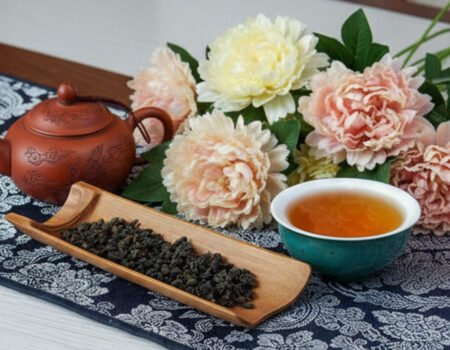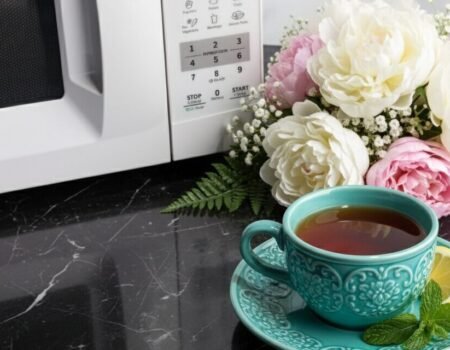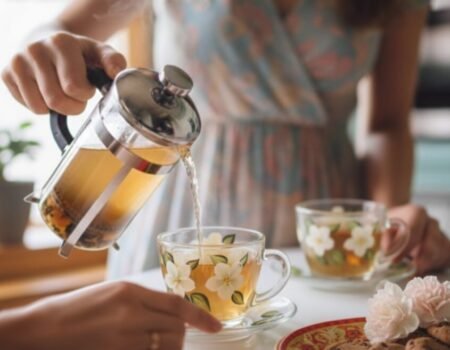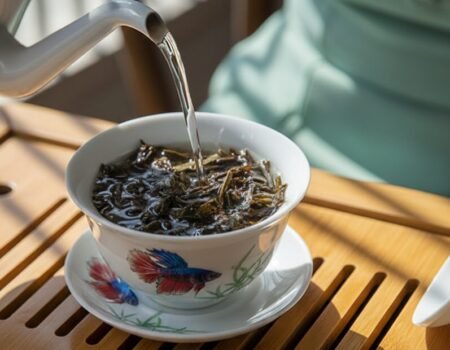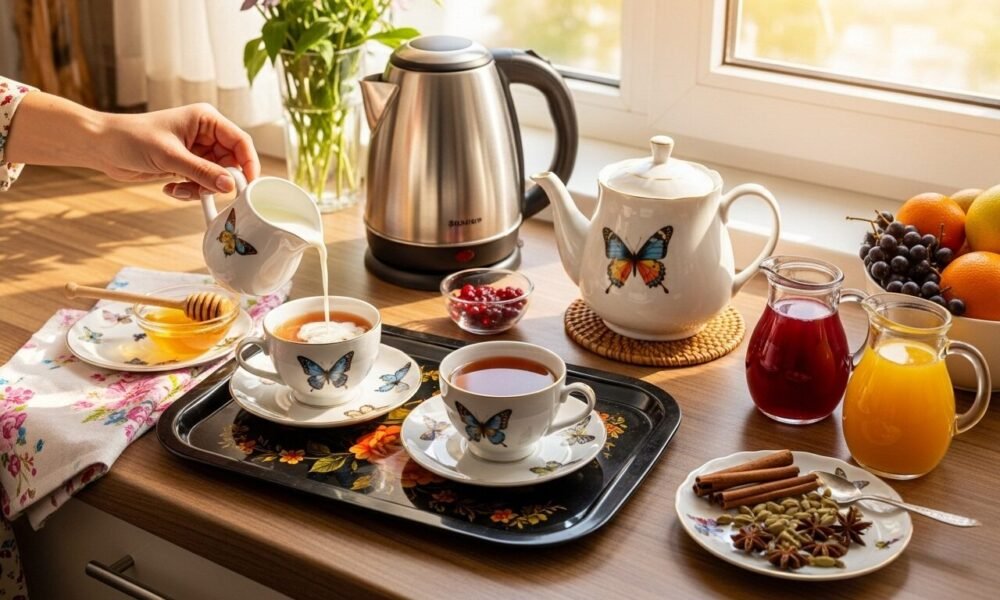
How to Make Tea Taste Better: Tips for Enhancing Your Cup of Tea
Index
Do you find your daily tea routine boring or bland? Many tea drinkers struggle with flat-tasting brews that fail to deliver the rich flavors they crave. Even quality tea leaves can produce disappointing results without proper preparation techniques.
Making small changes to your brewing process can transform an ordinary cup into something special.
Studies show that water quality is a significant in tea’s final taste. Using filtered water instead of tap water removes chlorine and minerals that mask tea’s natural flavors.
The right water temperature matters too – green tea needs cooler water than black tea to avoid bitterness.
This guide will show you simple ways to make tea taste better through proper brewing methods and flavor enhancers. You’ll learn which additions pair best with different types of tea and how to adjust brewing times for optimal results.
From citrus additions to spice infusions, these tips will upgrade your tea experience. Ready for better tea?
Key Takeaways
- Water comprises about 98% of a cup of tea, so its quality is a major influence on flavor, aroma, and clarity of tea. Therefor use filtered water to remove chlorine and minerals that mask natural flavors.
- Match water temperature to tea type – green tea needs cooler water (170°F / 76°C) with 2-3 minutes steeping time, while black tea requires hotter water (200°F / 93°C) with 4-5 minutes steeping.
- English-style brewing includes warming the teapot first and using one teaspoon per cup “plus one for the pot” for proper strength.
- Fresh additions like lemon slices, cinnamon sticks, or mint leaves can transform ordinary tea without added sugar or calories.
- Dairy and plant-based milks like soy reduce bitterness while adding creaminess to both black and green teas.
Understanding the Basics of Tea Preparation

Tea preparation starts with a few key steps that make all the difference in your final cup. Good tea depends on quality leaves, proper water heat, and the right amount of time to steep.
Importance of quality tea leaves
Quality tea leaves form the foundation of a great cup of tea.
Loose-leaf tea contains more essential oils and flavor compounds than tea bags, which often use broken leaves or dust. Fresh leaves release better aroma and taste during steeping, creating a more satisfying drink without bitter notes.
The source matters greatly for your brew’s taste. Chinese, Indian, Japanese, and Sri Lankan teas each bring unique flavor profiles based on growing conditions and processing methods.
Loose leaves allow water to circulate fully around each leaf, extracting maximum flavor. For the best cup, start with high-quality leaves free from artificial ingredients – they need less doctoring with sweeteners or milk to taste good.
Correct water temperature and steeping time
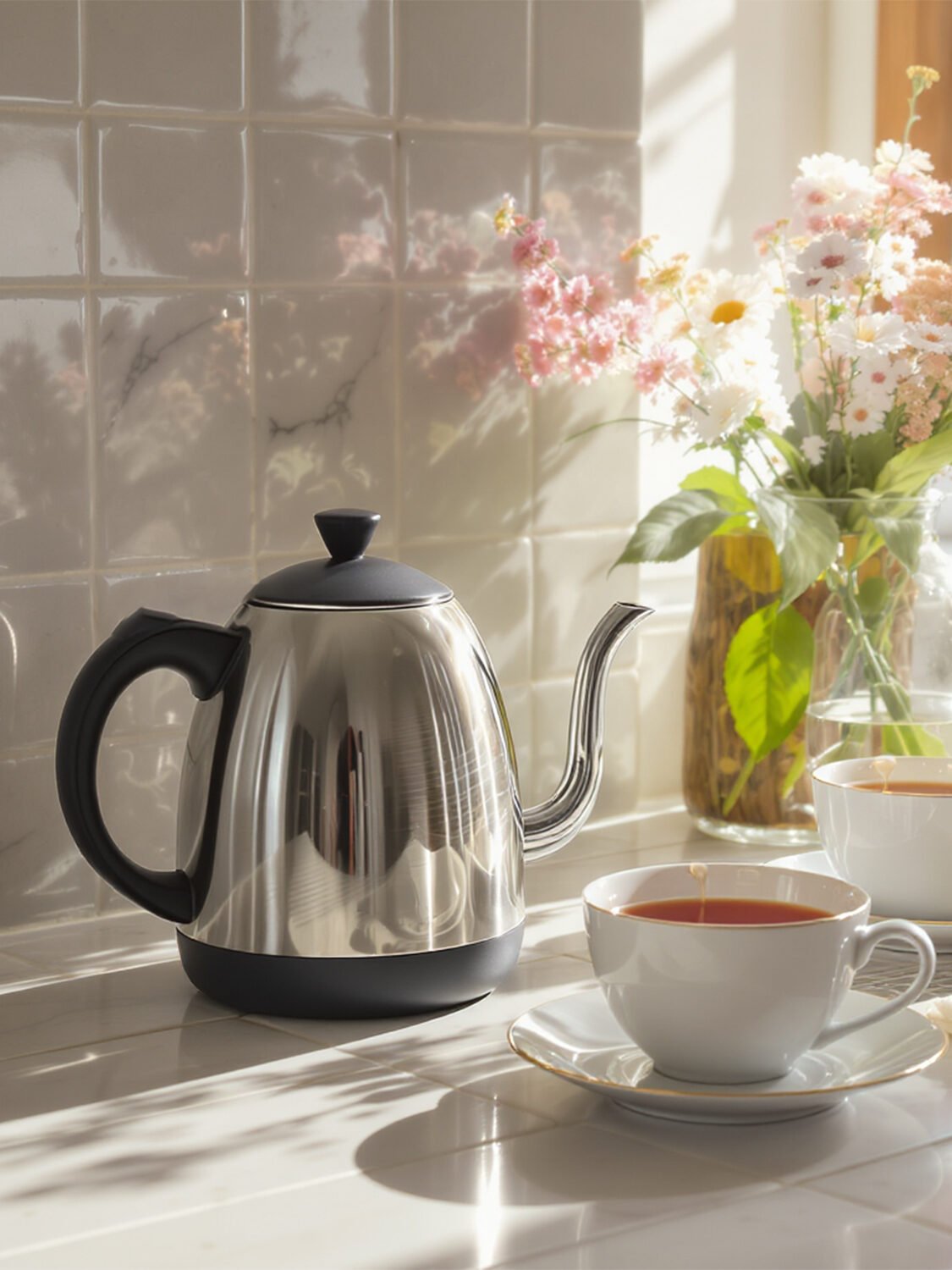
Beyond selecting quality leaves, proper brewing temperature and time make a huge difference in your tea’s taste. Each tea type needs specific conditions to release its best flavors.
Green tea requires cooler water around 170°F / 76°C to prevent bitterness and should steep for just 2-3 minutes. Black tea thrives in hotter water at about 200°F / 93°C with a longer steep time of 4-5 minutes to extract its full character.
Many tea troubles stem from incorrect brewing methods. Thin, watery tea often results from too few leaves, water that’s not hot enough, or rushing the steeping process. Bitter tea happens when you use water that’s too hot (especially for delicate green teas), steep too long, or use too many leaves.
Try this simple experiment: brew the same black tea for 30 seconds, the recommended time, and 7 minutes. You’ll taste the dramatic difference and find your perfect balance between weak and bitter tea.
How to Brew Tea Like the English
The English have perfected tea brewing through centuries of tradition. Their methods create a robust cup that balances strength and flavor perfectly.
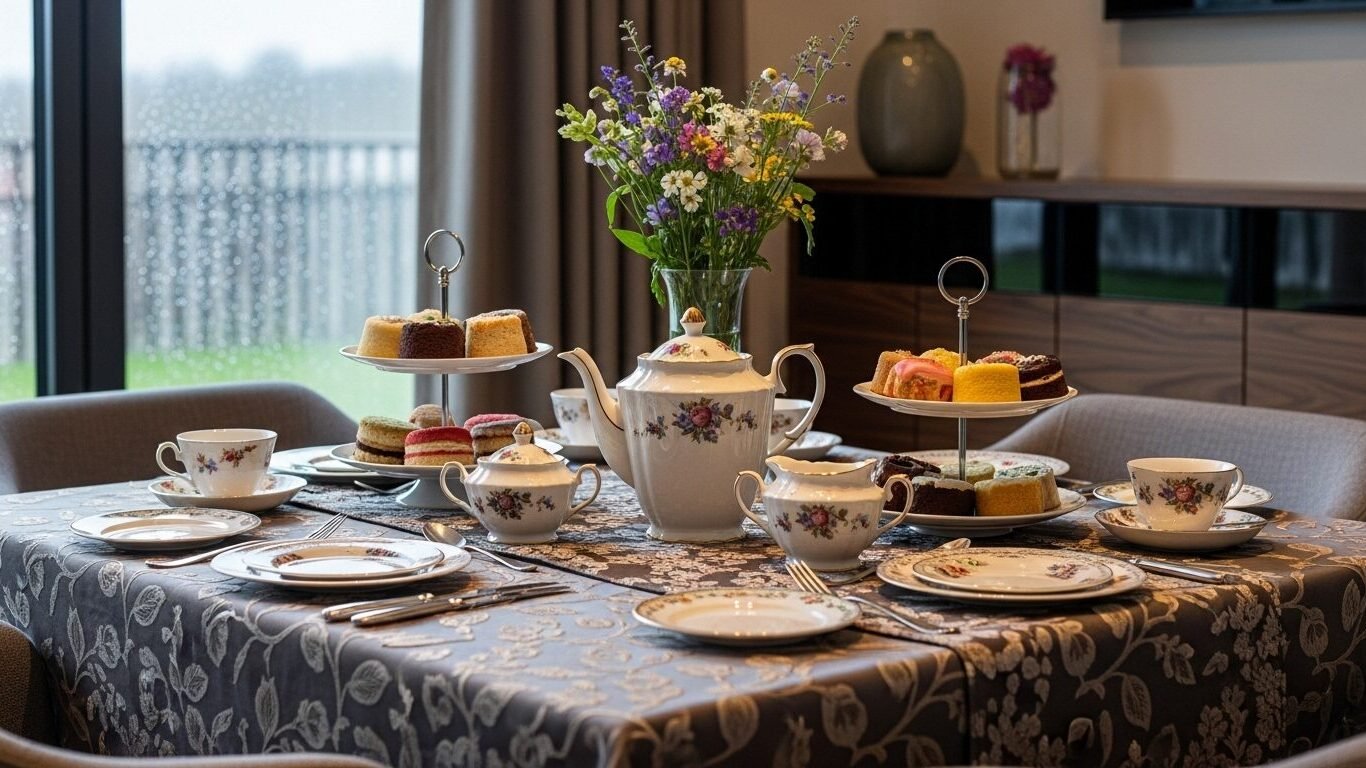
- Start with fresh, cold water in your kettle – tap water can affect taste negatively.
- Bring water to a full, rolling boil rather than just heating it.
- Warm your teapot first by swirling a small amount of hot water inside before discarding it.
- Use one teaspoon of loose leaf tea per cup plus “one for the pot” as the traditional rule suggests.
- Pour the boiling water directly onto the tea leaves or bags, never add tea to water.
- Cover your teapot with a cozy or towel to maintain proper steeping temperature.
- Steep black breakfast tea for exactly 3-5 minutes for optimal flavor extraction.
- Add low-fat milk to your cup first if brewing a strong black tea like English Breakfast.
- Sweeten with white sugar if desired, as the English typically avoid brown sugar or honey with traditional teas.
- Serve in proper teacups rather than mugs for the authentic English tea experience.
- Pair your perfectly brewed cup with simple biscuits or scones for a complete English tea moment.
- Twinings English Breakfast tea bags make an excellent choice when authentic loose tea isn’t available.
Enhancing the Flavor of Hot Tea
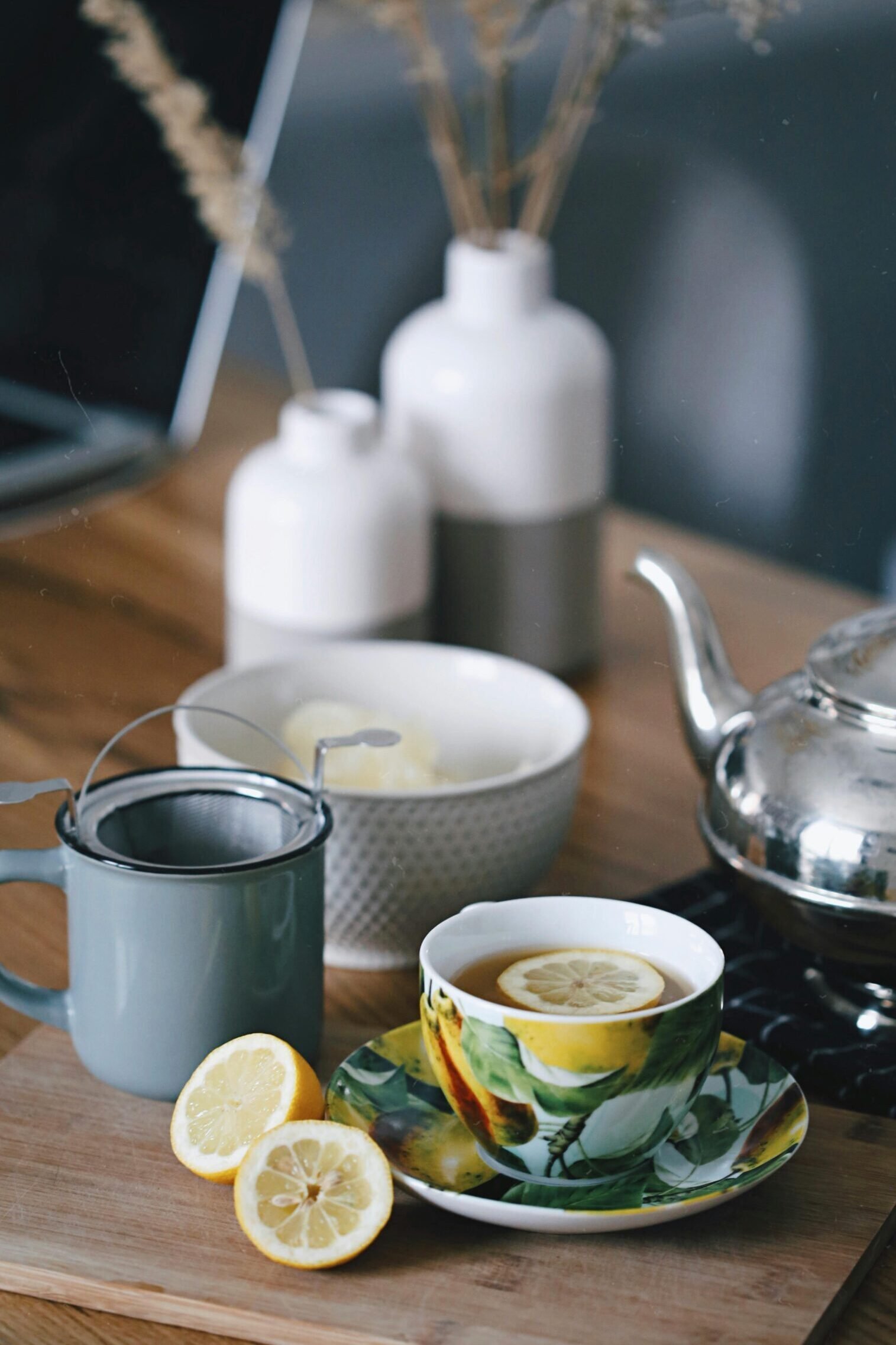
Hot tea offers a blank canvas for flavor experiments that can transform your daily cup. You can add simple ingredients like citrus, spices, or floral elements to create new taste experiences.
Adding citrus for a refreshing zing
Lemon or lime slices add bright, zesty notes to your tea while cutting through bitterness. A squeeze of fresh citrus juice transforms ordinary green tea into a vibrant drink with enhanced flavor and aroma.
Many tea lovers enjoy this simple addition because citrus flavors blend well with all tea types. Try adding lemon to black tea for a classic taste or pair lime with oolong for something different.
Citrus Green Tea offers a perfect balance between earthy tea notes and sunny citrus flavors. For a holiday twist, mix apple juice with black tea to create a festive drink that warms you up.
Fresh lemongrass combined with a lemon slice brings depth to hot beverages without adding sugar. This pairing works especially well with green and herbal teas where the natural grassy notes complement the citrus zing.
Infusing warm spices for depth
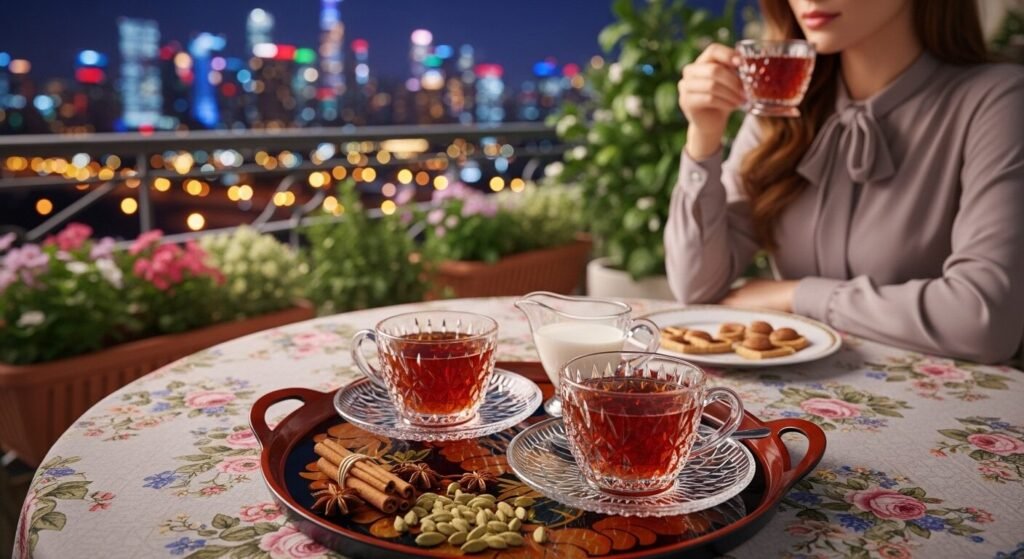
Warm spices add remarkable depth to your tea, transforming an ordinary cup into something special. Cinnamon sticks create a sweet, woody flavor that pairs perfectly with black tea varieties.
Fresh ginger root brings a spicy kick that tastes great and contains anti-inflammatory properties and could help with digestion and nausea.
These natural flavor enhancers work without masking the tea’s original taste.
Try adding cardamom pods to chai for an authentic taste that brings warmth. The beauty of using these spices is their versatility – they complement both strong black teas and lighter green varieties.
Simply drop a small piece of fresh ginger or a cinnamon stick into your teapot during steeping. The longer they steep, the stronger the flavor becomes. This simple method allows you to control the intensity based on your taste buds’ preference.
Incorporating floral or herbal infusions
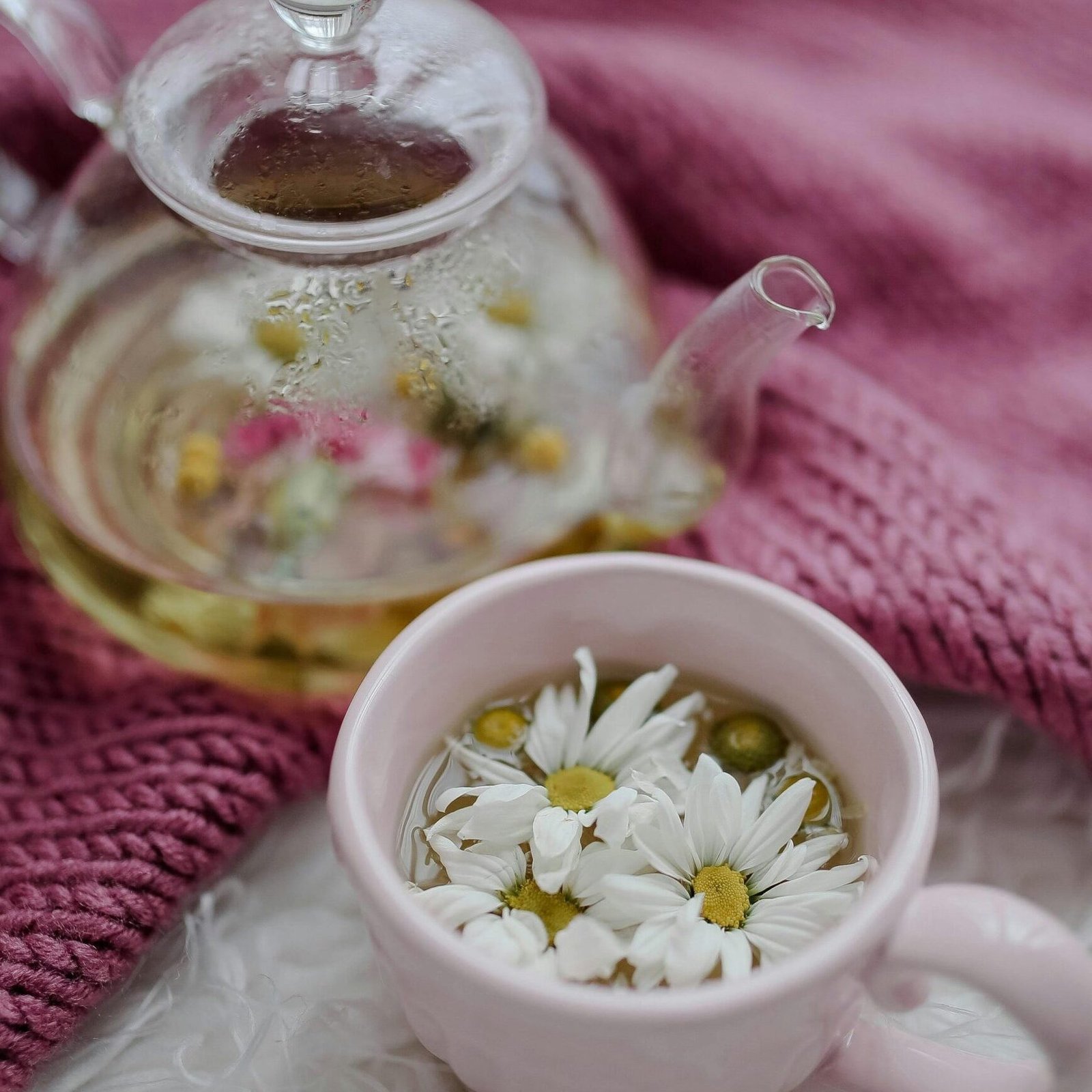
Floral infusions add depth and character to your cup of tea. Rose, lavender, jasmine, osmanthus, and chrysanthemum can transform an ordinary brew into something special. These natural elements boost both flavor and aroma, creating a more complex taste profile.
You can mix dried flower petals directly with your tea leaves before steeping for a balanced fusion.
Fresh herbs offer another path to better-tasting tea. Mint or basil leaves make your drink refreshingly aromatic with minimal effort. Try gently crushing the leaves before adding them to release their essential oils.
This simple technique maximizes the herbal impact without overpowering the tea’s base flavor. Different herbs pair well with specific tea types – mint complements green tea while basil works nicely with black varieties.
Making Iced Tea More Flavorful
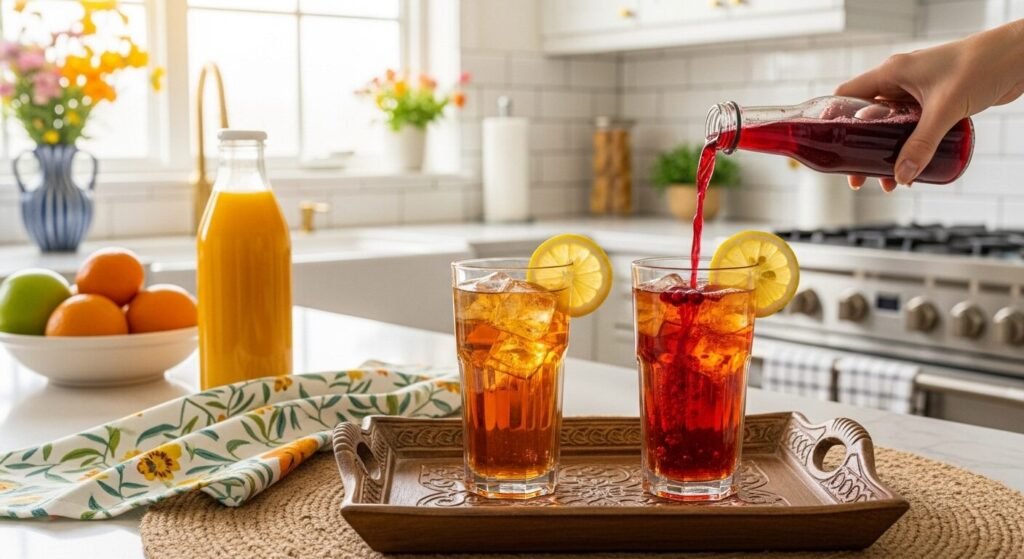
Make your iced tea burst with flavor by adding fresh fruit juices, mixing in sparkling water, or garnishing with mint leaves – read on to discover how these simple tricks can transform your summer drink from bland to amazing!
Adding fruit juice or syrups
Fruit juice transforms ordinary iced tea into a flavor adventure. A splash of pineapple or passion fruit juice adds both sweetness and exciting new taste notes, especially in green or herbal teas.
This simple addition works magic on hot summer days when you need a refreshing drink. Many tea lovers find that berry juices pair wonderfully with black teas, while citrus juices complement green varieties.
Fruit syrups offer another path to better-tasting tea. Just one teaspoon can create layers of flavor complexity that plain sugar can’t match. Raspberry or peach syrups blend perfectly with traditional black teas, while mint or vanilla syrups enhance herbal blends.
The beauty of using syrups lies in their concentrated nature – you get maximum flavor with minimal dilution of your carefully brewed tea.
Mixing with sparkling water
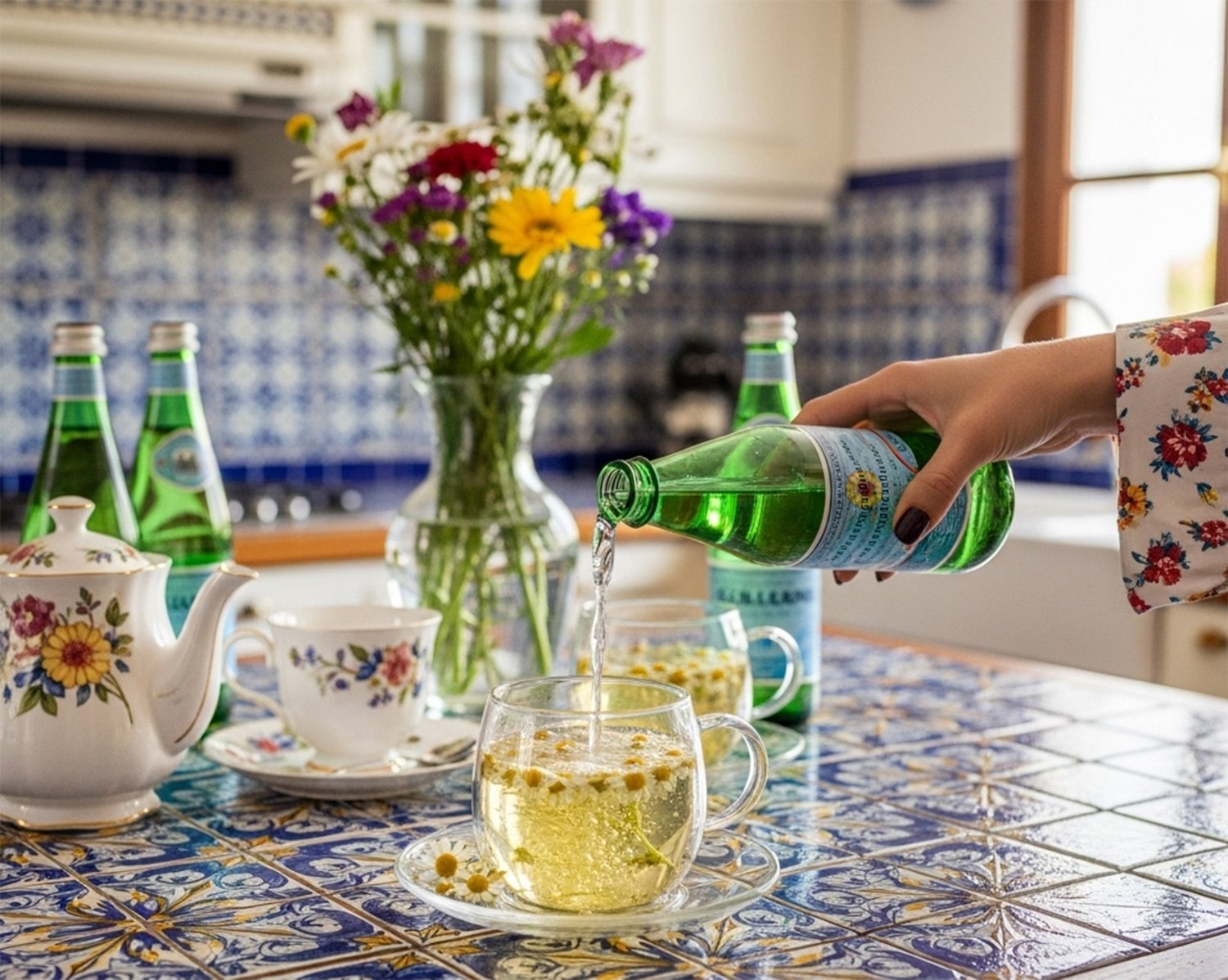
Sparkling water transforms ordinary iced tea into a fizzy delight that tingles your taste buds. Tea lovers often mix their favorite brews with bubbles to create a lighter, more invigorating drink.
This simple addition works magic with black tea, green tea, or herbal varieties like peppermint or chamomile tea. The carbonation cuts through sweetness while adding a refreshing twist that makes each sip more exciting.
You can adjust the ratio of tea to sparkling water based on your taste preferences. Start with equal parts and modify from there. Many tea enthusiasts find this combination perfect for hot summer days as an alternative to sugary soft drinks.
The bubbles lighten the flavor profile while creating a unique beverage experience that feels special without adding calories. For an extra touch, garnish your sparkling tea with fresh mint leaves or citrus slices to enhance both flavor and presentation.
Garnishing with fresh herbs
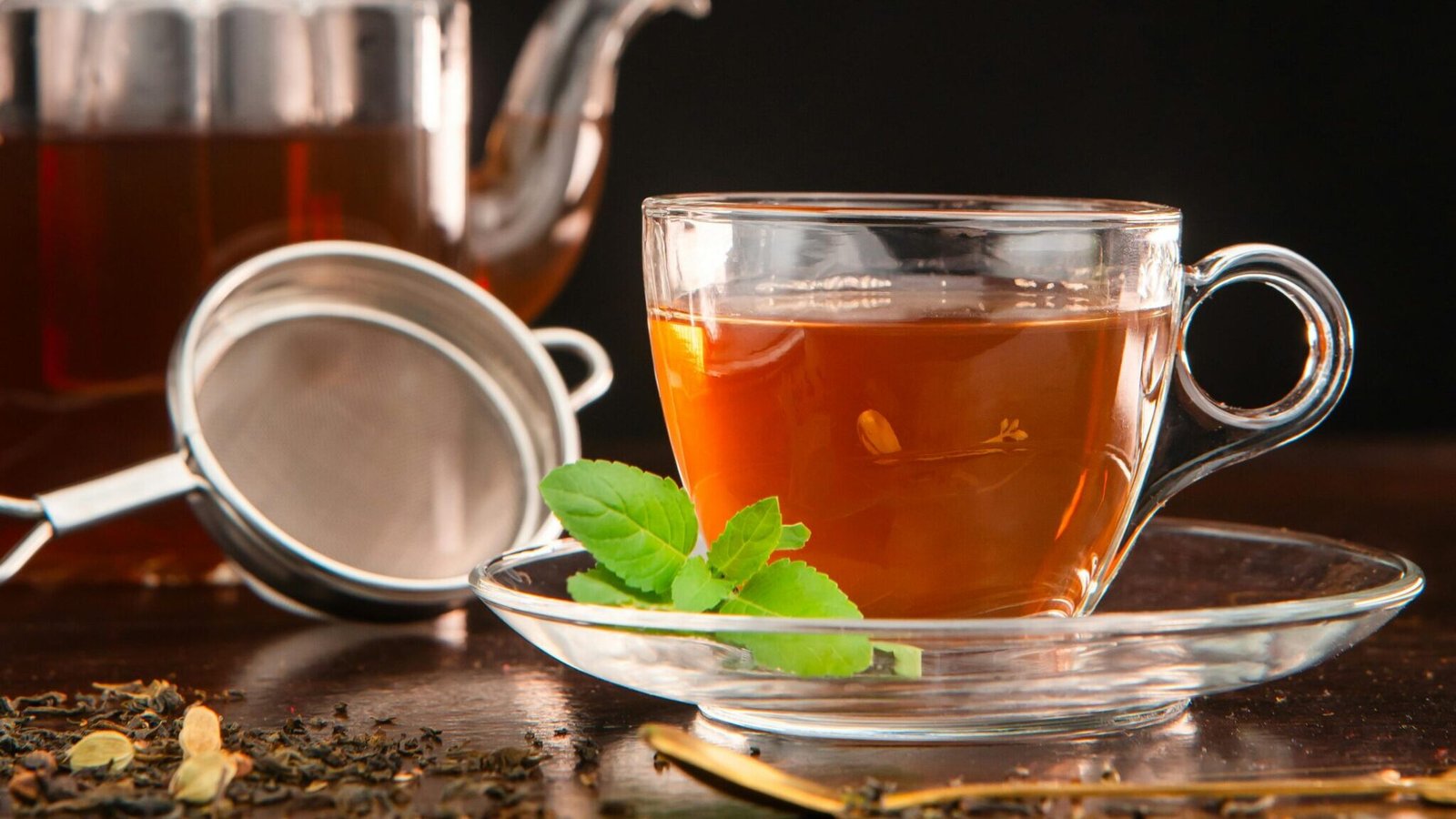
Fresh herbs like mint and basil transform your iced tea into an aromatic delight. These natural flavor boosters add complexity without extra calories or sugar. Simply tear a few leaves and drop them into your glass, or muddle them gently at the bottom before adding tea.
Mint pairs beautifully with green tea, while basil creates magic with fruit-infused blends. The oils from these herbs release slowly, creating a layered taste experience that evolves as you sip.
For maximum impact, slap herb sprigs between your palms before using them as garnish. This quick action releases essential oils and intensifies the aroma. Fresh herbs do more than just look pretty—they elevate the entire drinking experience through both scent and taste.
The bright green leaves floating in your glass also make your tea visually appealing for guests or social media photos. Next, let’s explore how natural sweeteners can further enhance your tea without refined sugar.
Creative Additions to Experiment With
Tea offers a blank canvas for your taste experiments beyond basic brewing. Try adding maple syrup or date syrup for natural sweetness, or mix in oat milk or almond milk for a creamy texture that transforms your cup.
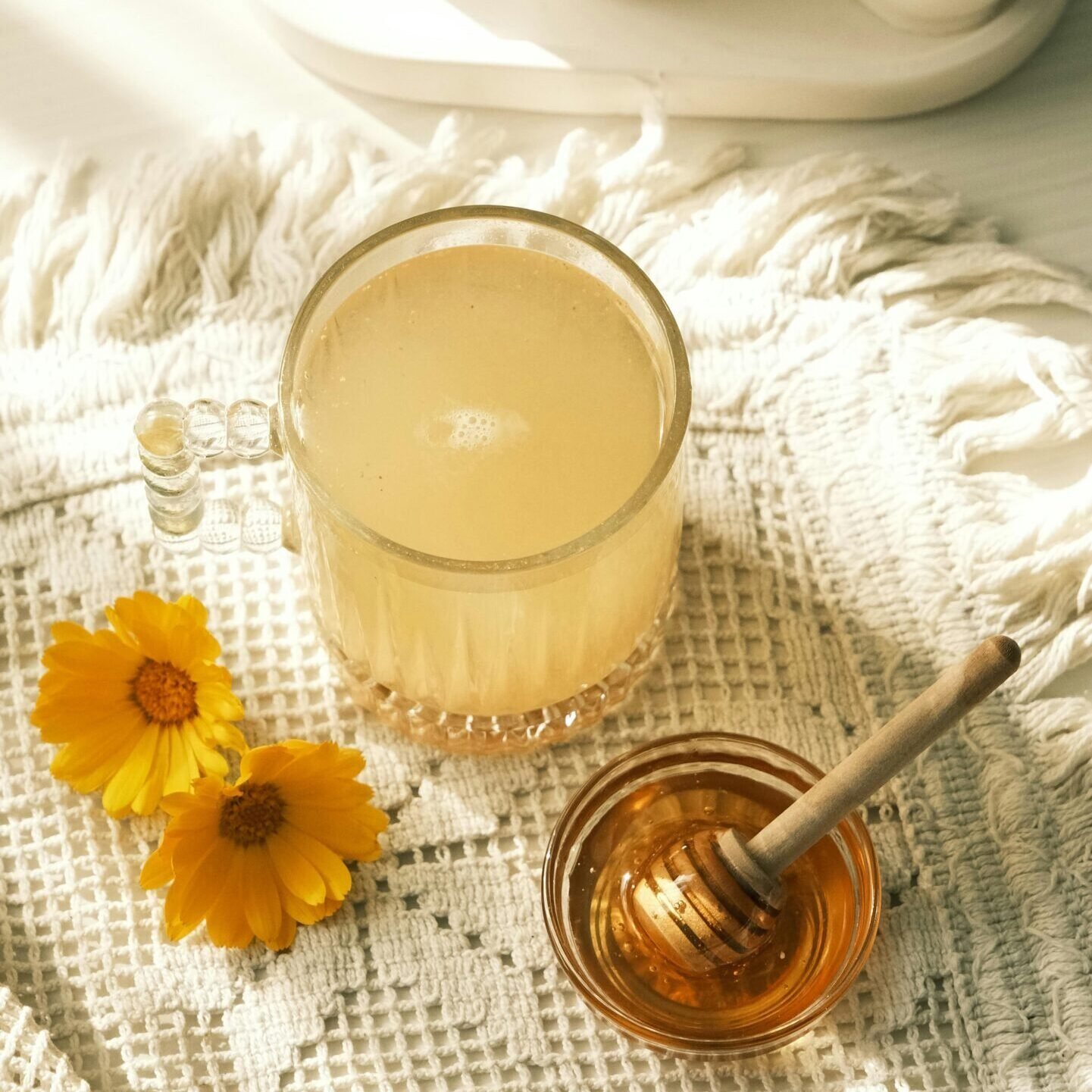
Natural sweeteners like honey or maple syrup
Natural sweeteners add depth and character to your tea without the empty calories of white sugar. Honey brings antimicrobial benefits and soothes sore throats, making it perfect for black and mint teas.
The rich flavor profile of maple syrup contains minerals and antioxidants that complement chai and black teas beautifully.
Other options like stevia and licorice root offer sweetness without the sugar spike. Each sweetener creates a unique taste experience in your cup. Try adding a teaspoon of honey to peppermint tea during cold weather or a dash of maple syrup to your morning black tea for a cozy start to your day.
Your taste buds and body will thank you for choosing these natural options over artificial sweeteners.
Plant-based milk for creaminess
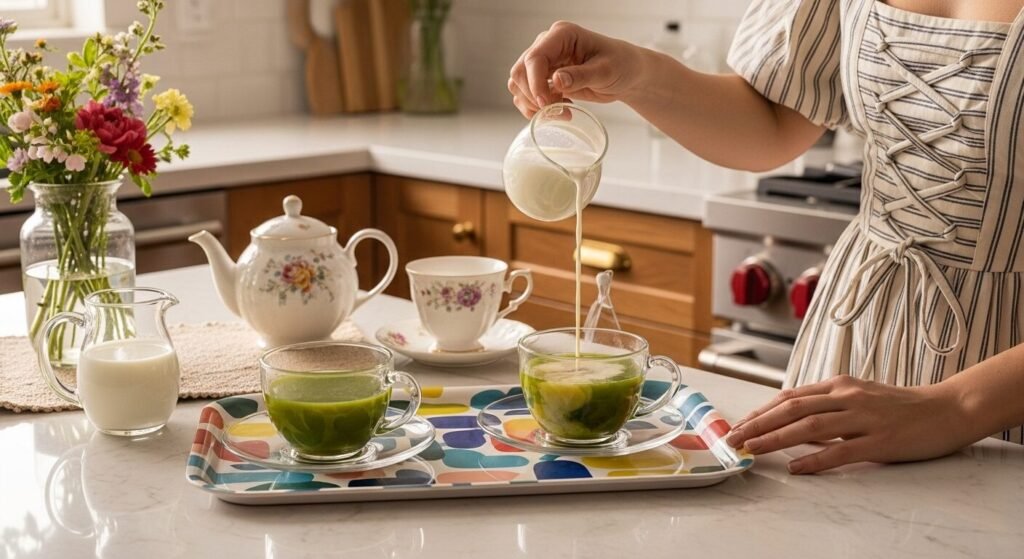
Beyond natural sweeteners, plant-based milks offer another excellent way to add creaminess to your tea. Many tea drinkers now choose dairy-free options like almond or oat milk to reduce bitterness while supporting sustainable consumption.
These milk substitutes create a smooth, creamy mouthfeel that enhances tea flavor without dairy. Soy milk ranks particularly high among options, scoring well in taste tests thanks to its rich texture.
Plant milks with sweet, coconut, nutty, and cereal notes work best for tea. Many brands improve texture by adding tricalcium phosphate, vegetable oils, sea salt, or natural flavors.
These additions help create that silky quality tea lovers seek. For green and black tea varieties that taste bitter, just a splash of plant milk can transform your cup into a more balanced drink while keeping the unique flavor of your tea intact.
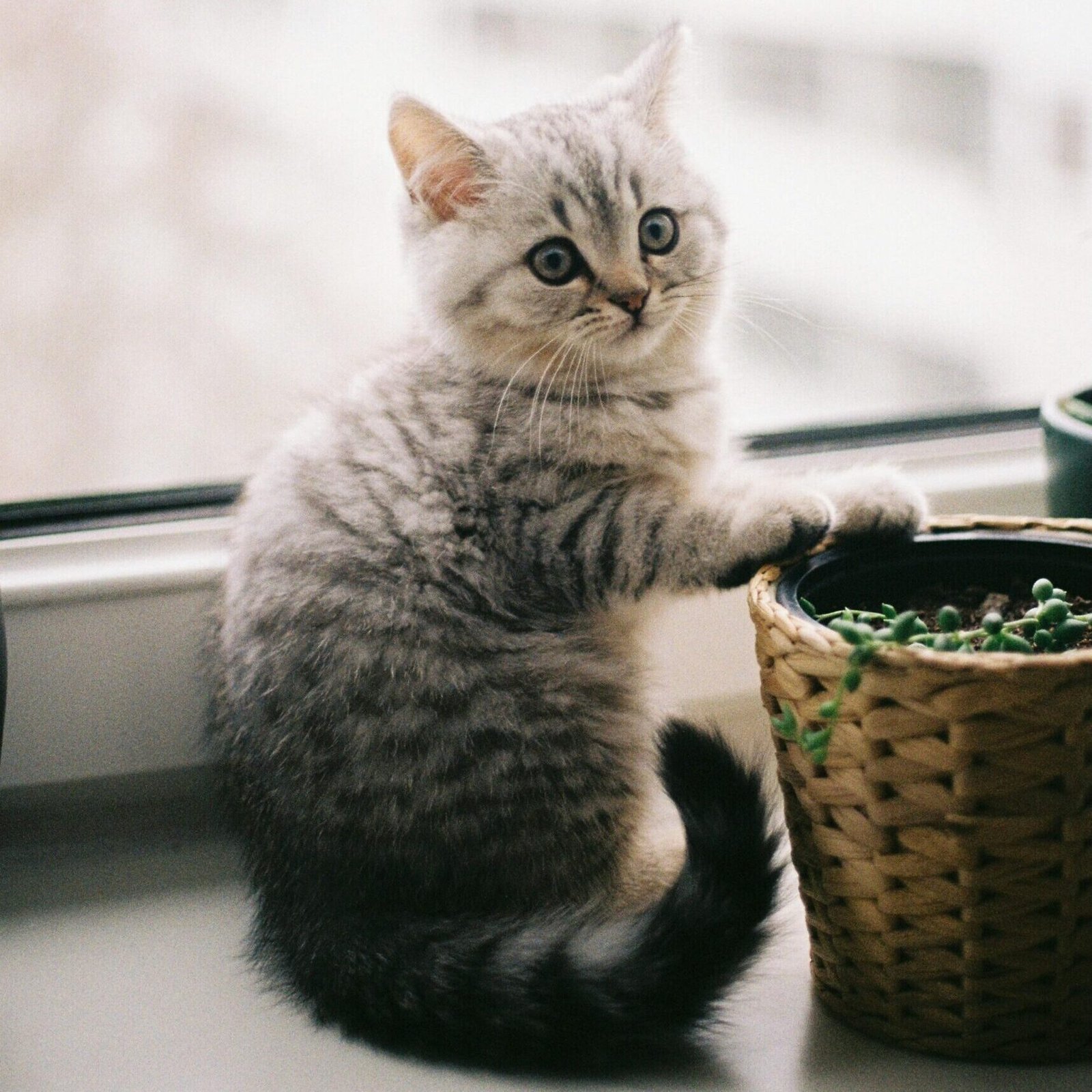
Conclusion
Brewing better tea doesn’t require fancy equipment or rare ingredients. Simple changes like using fresh water, proper temperatures, and quality leaves make a huge difference. Try adding natural flavors with citrus, spices, or herbs to create your perfect cup.
Experiment with different sweeteners and milk options to find what suits your taste buds best. Your tea journey offers endless possibilities – each small tweak can transform an ordinary drink into a delightful experience worth savoring every day.
FAQs
1. How can I enhance the flavor of my tea at home?
You can enhance the flavor of your tea by using fresh water, brewing at the right temperature, and adding natural flavors like lemon juice or mint. High-quality tea leaves also make a big difference in taste.
2. Does water quality affect the taste of tea?
Yes, water quality greatly affects the taste of tea. Fresh water with low mineral content works best, so avoid tap water which can make tea taste flat.
3. What can I add to my tea to make it taste better?
Add honey, lemon juice, or fresh herbs like mentha to enhance the flavor of your tea. For black and green tea, a splash of milk can reduce bitterness, while masala chai benefits from warming spices.
4. How do different water temperatures impact tea flavor?
Different water temperatures are crucial for brewing various types of tea. Green tea needs cooler water (175°F / 71°C), while black tea and oolong tea require hotter water (200-212°F / 95-100°C) to release their full flavor.
5. Can sugar substitutes alter the taste of tea?
Sugar substitutes can alter the taste while helping maintain blood sugar levels. Some may add a slight aftertaste, so experiment with different options like honey or stevia to find what complements your favorite tea blends.
6. Why does my tea sometimes taste bitter?
Tea tastes bitter when it’s over-steeped or brewed with water that’s too hot. Darjeeling tea and Earl Grey tea are especially prone to bitterness if steeped too long. Simply reduce steeping time or lower water temperature to fix this issue.
References
- https://www.paperandtea.com/blogs/journal/tea-preparation
- https://nepalteacollective.com/blogs/sips-and-stories/delicious-tips-on-how-to-make-tea-taste-better?srsltid=AfmBOoqw6F3VyQJlz4K4rcH8g0bC7bGZzaKs0T56yWvuFBENwCJwfmSI (2024-09-24)
- https://rishi-tea.com/blogs/journal/why-water-temperature-is-important-when-brewing-tea?srsltid=AfmBOopTMv1JTmuLq7dpQiHAJF5UYfH5d20qZp6oN3lzssDIl_3zB9hx
- https://www.food.com/recipe/the-perfect-cup-of-tea-british-style-230372
- https://simplelooseleaf.com/blogs/news/how-to-make-tea-taste-better
- https://www.redrockteahouse.com/blogs/articles/how-to-make-tea-taste-better?srsltid=AfmBOoqwW6JoxPgiLXr-DoGlPwbaSQxO7Q_ZRZsKFS4fefdUjZ5urtke (2025-02-18)
- https://theteahaus.com/teajournal1/post/how-can-i-make-tea-taste-better-a-guide-to-your-best-cup-of-tea.html?srsltid=AfmBOoq3XsB5quCEv6xgIvAMIesbyG6roERQIvunROzL-eTPb8t5pRO-
- https://theteahaus.com/teajournal1/post/how-can-i-make-tea-taste-better-a-guide-to-your-best-cup-of-tea.html?srsltid=AfmBOorbUxtTUBH6tZaaXJOjjsWGQSgcOR9xiF17-jtk4I9n345XTafm
- https://nepalteacollective.com/blogs/sips-and-stories/delicious-tips-on-how-to-make-tea-taste-better?srsltid=AfmBOoqMcdGxyZw2h9szjFWLgUIX8LrfAlQcJ-QwVSPSC1mCgODRi3cN (2024-09-24)
- https://nepalteacollective.com/blogs/sips-and-stories/delicious-tips-on-how-to-make-tea-taste-better?srsltid=AfmBOorNf33LEbKnBVF8uhICHuRb1rwqjBwf2aU3Ip_O0gp1bL5W7eqE (2024-09-24)
- https://nepalteacollective.com/blogs/sips-and-stories/delicious-tips-on-how-to-make-tea-taste-better?srsltid=AfmBOopxdSvWKGZBoIYZJfeivg1XhLjFOo1aG5Semmkkq6O0pNoiV7mk (2024-09-24)
- https://shopmycupoftea.com/blogs/one-more-cup/how-to-make-the-perfect-iced-tea?srsltid=AfmBOoo2GuXy4NByWKuH8ReVSTzkgoPj14t2H1GIfJ30XbXyQo5GCtJV
- https://jyyna.co.uk/how-to-make-iced-tea/
- https://goodgoodbrand.com/blogs/articles/healthy-sugar-alternatives-for-tea
- https://www.sciencedirect.com/science/article/pii/S0963996924001637




